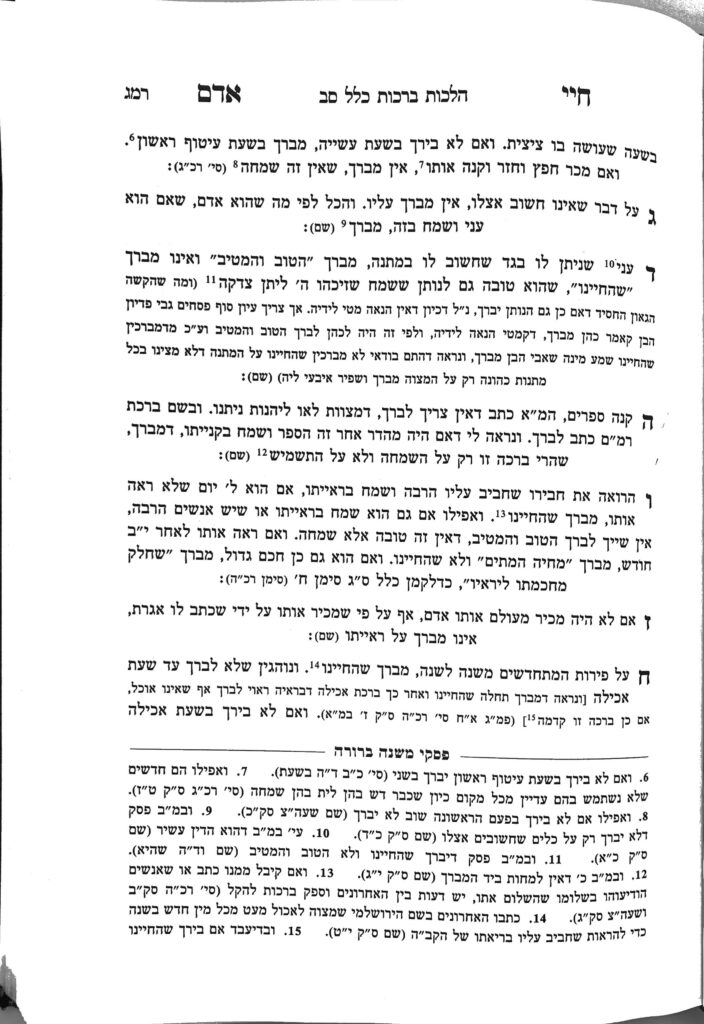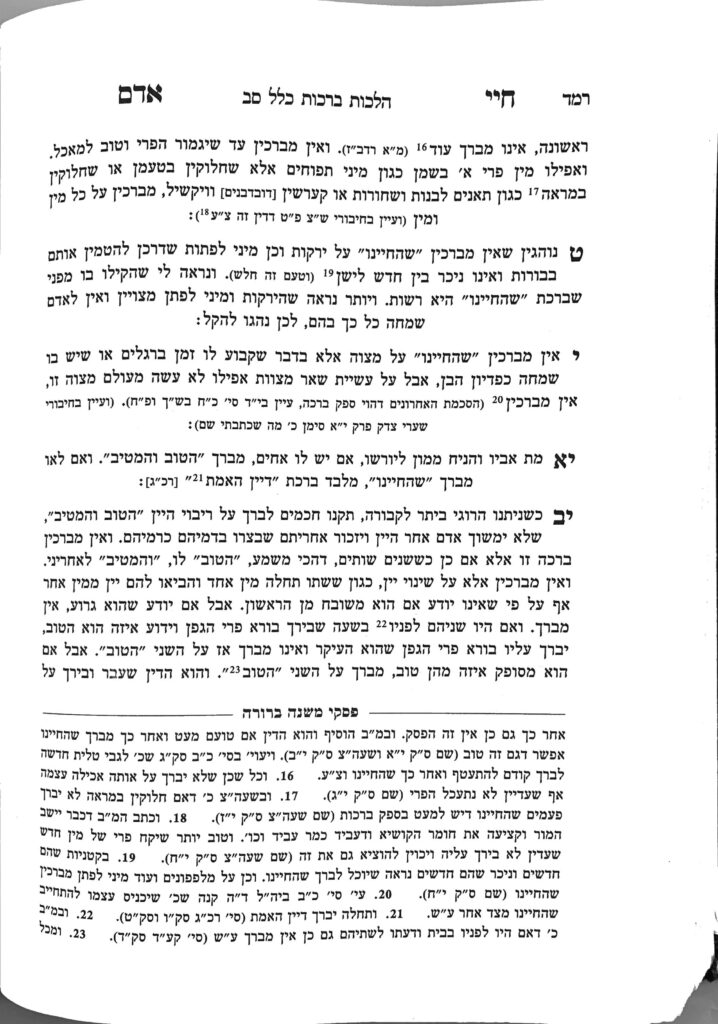We are beginning siman 8. The Chayei Adam addresses the shehecheyanu made on new fruits. We will learn the Chayei Adam, and then discuss the practical ramifications.
Fruits which grow in cyclical seasons receive a shehecheyanu, even if the cycle is irregular (e.g., every other year), because there is a time element, and there is simcha generated from arriving at that time (see shiur 1193).
Although the shehecheyanu can be made at the time of acquisition, the minhag is to make the shehecheyanu at the time of consumption, because that is when the person has the most simcha.
The Chayei Adam writes that, in his opinion, the shehecheyanu should precede the bracha on the item, because the chiyuv shehecheyanu really comes when the fruit is first acquired, before there is a chiyuv to make a bracha on the achila.
If a person does not make the bracha when they first eat the fruit, they lose the opportunity to recite shehecheyanu.
The fruit must be fully ripe in order to recite shehecheyanu.
Two different types of the same item (e.g., green grapes and red grapes) will each receive a shehechiyanu, provided that they taste different. The Chayei Adam adds that even if two items taste the same, if they look different, they also both receive a shehecheyanu.
The Mishnah Berurah disagrees on this last point, and holds that if they taste exactly the same, they do not receive more than one bracha. However, the Mishnah Berurah concludes that one may follow the Chayei Adam if they wish.
In siman 9, the Chayei Adam writes that the minhag is not to recite shehecheyanu on any vegetables. He explains that the minhag stems from the fact that we tend to store vegetables, so they are always available and it is hard to distinguish between the new season and the previous season.
The Chayei Adam writes that this is a weak explanation. He suggests another explanation for the minhag. He explains that the shehecheyanu on new fruits is not a chiyuv, but rather a reshus. (As opposed to the shehecheyanu on mitzvos, which is a chiyuv.) Therefore, since people do not feel so much simcha from vegetables, due to their constant availability, the minhag has developed not to make a bracha.
Based on the Chayei Adam’s second explanation, Rav Wosner, zt”l, writes in a teshuva that if a person has no simcha whatsoever from a new fruit or vegetable, they should not make a shehecheyanu. However, the Mishnah Berurah disagrees, and holds that if a person can identify that a vegetable is from the new season, and they feel simcha from the item, they could make a shehecheyanu.
Summary
- Fruits and vegetables which grow in cyclical seasons theoretically receive a shehecheyanu. However, the minhag is to refrain from reciting shehecheyanu if one has no simcha whatsoever from the new item. Additionally, one must ensure that the item is from the new harvest, and not stored from a previous year.
- The minhag is to make the shehecheyanu right before eating the item for the first time. If they do not make the bracha on the first time they eat the fruit, they lose the opportunity to make the bracha.
- Two different types of the same item both receive a shehecheyanu. It is a machlokes whether both receive a shehecheyanu if they taste similar. One may do as he wishes.




